On nous demande souvent quels mèches de bougie fonctionnent le mieux avec quelles cires, surtout avec le nombre de types de mèches disponibles qui augmente chaque année. Vous pouvez avoir tout le reste parfait avec vos bougies, cependant la mauvaise mèche peut signifier que vos bougies ne brûlent pas aussi bien qu'elles le pourraient.
Ce guide fournit un aperçu pour sélectionner la meilleure mèche pour vos bougies, et obtenir les meilleurs résultats de la mèche que vous choisissez.
Cannes HTP :
Utilisant un mélange de coton et de fibres de papier tressées, les mèches HTP offrent une mèche rigide et robuste pour la fabrication de bougies. Les mèches HTP sont auto-réductrices et ont une combustion plus douce, ce qui les rend idéales pour les bougies en cire de soja.
CDN Wicks :
Utilisant un style de tresse plate, les mèches CDN offrent une plus grande flexibilité aux fabricants de bougies. Comme les mèches CDN offrent une rigidité améliorée et sont sans zinc, cela permet aux fabricants de choisir parmi une large variété de cires en production. Ces mèches sont idéales pour les cires de palme, de paraffine et de soja.
Wedo Eco Cires :
Ce sont des mèches plates, sans noyau, fabriquées à partir d'un entrelacement de coton pur et de filaments de papier fins, ce qui offre une combustion stable et constante. Ces mèches sont un excellent choix lors de l'utilisation de concentrations plus élevées de parfums et de colorants.
CL Wicks:
Les mèches CL (coton et lin) sont des mèches plates innovantes, fabriquées à partir de coton non blanchi, entrelacées avec un fil de lin. Ces mèches offrent une excellente rigidité et minimisent la lueur résiduelle et la fumée. Elles ont été spécialement développées pour les cires végétales et les cires minérales fortement parfumées et constituent un excellent choix lors de l'utilisation de nos cires de colza et de noix de coco.
TCR Wicks :
Ce sont des mèches tressées à plat, fabriquées à partir de longues brins de coton filé en anneau et de papier, avec une enveloppe extérieure, ce qui donne à la mèche une structure plus rigide. Ces mèches offrent un excellent profil de combustion avec des cires à base de végétaux comme le soja et le colza.
Stabilo Wicks :
Les mèches Stabilo sont des mèches plates tressées sans noyau, avec un filament en papier spécial tissé autour d'elles. Cela favorise une action capillaire maximale et cohérente tout en garantissant une posture de flamme lors de la taille de la mèche. Ces mèches fonctionnent bien avec des paraffines fortement parfumées et des cires mélangées, comme le colza et la noix de coco, ainsi que d'autres cires d'origine végétale, qui sont généralement plus difficiles à fondre.
Cires en bois :
Les mèches en bois sont un choix plus moderne et de plus en plus populaire, produisant une flamme crépitante rappelant une cheminée. Ces mèches produisent généralement une flamme plus basse et plus large pour une combustion lente et uniforme.
Comment devrais-je choisir ma mèche ?
Vous verrez probablement quatre chiffres lors de la sélection d'une mèche : Diamètre de combustion, Longueur de mèche, Diamètre et Hauteur de l'onglet. Tous ces éléments fournissent des conseils utiles pour le produit de bougie que vous souhaitez créer.
Un bon point de départ pour les tests est de mesurer le diamètre de votre récipient et de le faire correspondre au diamètre de combustion de votre mèche.
Il est important de noter que les résultats peuvent varier en fonction des différents types de verre, de cires et de parfums utilisés. Nous vous recommandons de vérifier les spécifications des contenants que vous utilisez et de toujours tester votre bougie lorsque vous travaillez avec de nouveaux matériaux.
La couleur et le type de parfum impactent le processus de combustion, car certains sont plus difficiles à brûler et nécessitent une mèche plus grande. Il est important de changer des variables telles que la cire, la mèche, le contenant ou la couleur dans le cadre d'un processus de test systématique.
Considérez l'ensemble du processus de combustion dans vos tests, car la cire de bougie brûle et ensuite descend pendant de courtes durées, la cire peut ne pas atteindre une pleine piscine fondue et de la cire résiduelle peut rester sur les côtés du récipient. Si vous souhaitez brûler la bougie pendant des périodes plus courtes ou plus longues, il est important d'ajuster la taille de la mèche.
règle générale, pour des durées de combustion plus longues, optez pour une taille de mèche plus petite et pour des durées de combustion plus courtes, choisissez une taille de mèche plus grande. D'après notre expérience, une durée de combustion moyenne est de 2 à 3 heures.
Pourquoi ai-je besoin de tester lors de la fabrication de bougies ?
Les tests sont importants pour la viabilité à long terme de votre entreprise en maintenant le contrôle et l'assurance qualité pour tous vos produits de bougie. Nous recommandons de brûler un minimum de 3 bougies pour garantir la cohérence. Comme mentionné ci-dessus, tout changement dans les variables de votre production de bougies doit être surveillé et mis en œuvre de manière systématique.
La vidéo suivante est assez longue mais vaut la peine d'être regardée pour mieux comprendre ce qu'il faut rechercher lors de l'essai de combustion de vos bougies :Que devrais-je faire ensuite ?
Pour en savoir plus sur le choix de la mèche correcte, pourquoi ne pas jeter un œil à notre FAQs ou notre Centre de ressources.
Si vous ne parvenez pas à trouver les informations que vous recherchez, nous sommes toujours heureux de vous aider via notre chat en ligne, par e-mail ou par téléphone.
Ce blog a été initialement publié en février 2018 et mis à jour en octobre 2022.


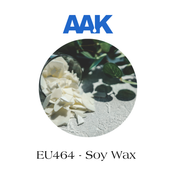

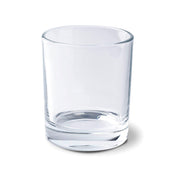
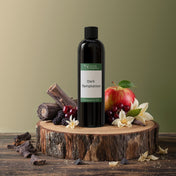
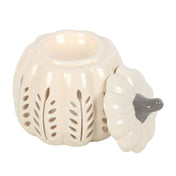
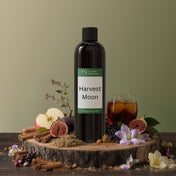
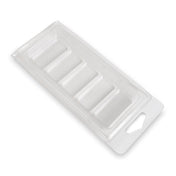

17 commentaires
Hi, I am using a 70mm diameter glass vessel and London Luxury A05 coconut soy wax with and 8% fragrance – could you give your expert advice on which wick/s you feel would work best with this – thank you
———
NI Candle Supplies LTD replied:
We’ve not tested this wax ourselves, Sue but would suggest trying the HTP104 or HTP105 wicks from our range for your own testing.
Dobry den, rada bych se optala na vhodny knot pro hlinikove nadoby o prumeru 6,3 cm a vyskou jen 2,5 cm (mala nadoba). Pouzivam vosk cargill c-3 nebo kerax 4135 (dost podobne) …jaky knot htp byste mi doporucili? Zatim se nejvice osvedcil knot stabilo 8 ale za tepla nebyla svicka citit. potrebuji vykonejsi knot (bez prepalu) moc dekuji
———
NI Candle Supplies LTD replied:
Trying to wick such a shallow candle will be tricky. We suggest trying the HTP 105 for a single wick option and the HTP 52 for double wicking; which may be better given the depth of the candle.
Hi there, I make wax melts using a parasoy blend, but wanting to make some pillar candles and I’m so unsure of which wicks are good for parasoy candles. Could I have some ideas? Thankyou
———
NI Candle Supplies LTD replied:
Thanks for your comment Olivia. We would suggest contacting the supplier of the wax you are using to ensure it is designed for the making of pillar candles and to then request some suggestions on suitable wicks. You may also email us with the name of the exact wax you are using and we would be happy to try and offer some guidance.
I have a 3 in in diameter vessel, I use your coconut apricot wax and I use 8% fo, for two weeks I’ve been trying to wick this beast to no avail, got any ideas on wicking??
———
NI Candle Supplies LTD replied:
Thanks for your comment, Julie. We don’t offer a Coconut and Apricot wax (although it does sound lovely) but if you can email us at support@nicandlesupplies.com with information on the oil used and wicks tried to date, we’d be happy to try and assist.
Hi
I am new to this and just don’t know what wick I should buy for a 20cm x 3cm pillar candle
Kind regards
Karen
———
NI Candle Supplies LTD replied:
Welcome to the world of candle making Karen! Unfortunately, none of our wicks are long enough for your project – you will need to source a wick that is 25cm long to give you room to work during the making process and has a burn diameter of 3cm. You may find that spooled wick is best suited for this purpose. We would suggest Googling spool wick and there should be a few suppliers who can assist with this length. We hope that’s some help.
I have a 6inch diameter mold and I don’t know what wick to use . Do I need 2 wicks?
It’s a Peony mold measures 6 inches in width
———
NI Candle Supplies LTD replied:
Thanks for your comment Wendy. Given the diameter of your mould is quite large, our thoughts are double wicking is the way to go. From our range, we’d suggest starting with the HTP 126 wick; however you may need to go to the HTP 1212 wick depending on your testing results.
Hello, the jars I use are 63mm in diameter and 80mm in height. I use yer Nature Wax C-3 100% Soy Container Wax, what do you would be the best wick to use. Thanks in advance.
———
NI Candle Supplies LTD replied:
Thanks for your comment Jenny, we’d suggest testing the HTP 83 wick and adjusting up or down from there depending on your testing results.
Hello,
Can you advise the best TCR wicks to use on 20 & 30cl jars please?
———
NI Candle Supplies LTD replied:
Thanks for your comment Lisa. We don’t sell TCR wicks, so are unable to offer size suggestions on this particular wick; sorry. If you email us with the dimensions of the 20cl and 30cl vessels you’re using; we’d be happy to offer suggested sizes in the HTP wick range which we offer.
Hi, I have made some peony candles (3" in diameter) from a mix of soy and beeswax. What would be the best wick to use for these to have them as stand alone candles (ie not on top of a container candle). Also, if I were to change the wax to a pillar wax, what wick would you recommend for that please? Thanks
———
NI Candle Supplies LTD replied:
Thanks for your comment Rebecca. You could try the HTP 105 as a starting point with either wax type, you would need to test for suitability and adjust your size up or down depending on your testing results.
Hello, I’m making beef and venison tallow candles, 25% beeswax and have troubles keeping a wick burning. I do not see tallow listed above, do you have a wick suitable for keeping tallow candles burning?
———
NI Candle Supplies LTD replied:
Thanks for your comment Suzanne. We don’t have specific experience in making candles from tallow and beeswax but the same process would apply in that you need to ensure the size wick being used is large enough for the diameter of your vessel, so that it does not drown or tunnel. Given you are using a unique combination for your candles, it will then be a case of testing a range of wick sizes based on how the suggested wick performs. Good luck!
Hi there
I am interested in making candles (hobby to begin with), I would be grateful if you could advise the best WAX and WICKS to use please.
I was gifted a start-up kit which has 4 small metal containers in it (7cm diameter, 7cm high). This kit contained beeswax and some fragrance oils, however, I would like to purchase additional materials and would be grateful for your professional advice.
———
NI Candle Supplies LTD replied:
Great to hear you’re interested in learning how to make candles Aisling! We would suggest starting with Golden Wax 464 and the HTP 105 wicks based on the diameter of the vessels you have there. We’d also suggest having a read through our Resource Centre for lots of useful articles to help get you started on the right foot with your candle making journey.
Hi, I’m trying to recycle old wax from assorted candles and regardless of the size of containers they all burn until there is a small circle of melted wax (approximately 1/2cm) and then drown leaving the rest of the candle untouched?
I have some candle colours and essential oils but I rarely have a nice smell either
———
NI Candle Supplies LTD replied:
Thanks for your comment Cilla, it sounds like the wick size you are using for your candles is too small and this is causing them to tunnel. Please reach out to us via email letting us know the diameter of the vessels you are using and we will do our best to assist further.
Hi this article is super helpful. I think I’ve got my head around candle wicks for fragrance oils with a rapeseed and coconut wax. I have also been trying out essential oil candles but I am really struggling to find the right wick. I’ve tried a variety of CL wicks in a 20cl jar with coconut and rapeseed and they don’t burn very well at all. The melt pool doesn’t reach the edges. What wicks would you recommend for essential oils and more complex blends with heavier oils?
Thanks
———
NI Candle Supplies LTD replied:
You’re very welcome Claud. CL wicks usually work quite well in the Rapeseed and Coconut Container Wax, it may be that a bigger size again is needed in order to achieve the correct melt pool or possibly that the percentage of oil being used needs to be reduced to prevent the wick from clogging (this is a common problem with heavier oils). If the supplier of the CL wicks has assisted with the correct size and you are still not having success, then we would suggest trying the HTP wick as an alternative.
Hello When measuring your candle jar, do you measure the top of the jar, measuring the internal diameter width for the wick size please?
Michelle
———
NI Candle Supplies LTD replied:
Thanks for your comment Michelle, that’s correct. If using our vessels, we have the internal dimension listed in the product description to assist also.
Kindly advise me on the most suitable wick for 20 Cl tin container for soy wax. Also wooden wick for 30cl candles in glass Soy wax. Thank you. Margaret
———
NI Candle Supplies LTD replied:
Thanks for your comment Margaret, the wick size required will depend on the diameter of your containers. Please email us with this information at support@nicandlesupplies.co.uk so we can assist further.
Hi I’m using paraffin container wax for my Christmas candles and having no luck with the wicks I use a30 cl jar and 8% fragrance oil I think I’ve tried nearly every wick under the sun and loosing the will to live lol I hope you can help thanks x
———
NI Candle Supplies LTD replied:
Thanks for your comment Andrea, we need some more info in order to help; please email us at support@nicandlesupplies.co.uk for support.